Introduction:
Importing and exporting are important parts of a strong global economy in today’s linked world. If you want to start your own business or are already a business owner, learning the basics of import and export can open up a world of opportunities for you. This (blog) will talk about how to successfully import and export goods, covering everything from researching the market and choosing the right products to making sure you follow all the rules of foreign trade. Take the first step toward becoming a world trade pro!
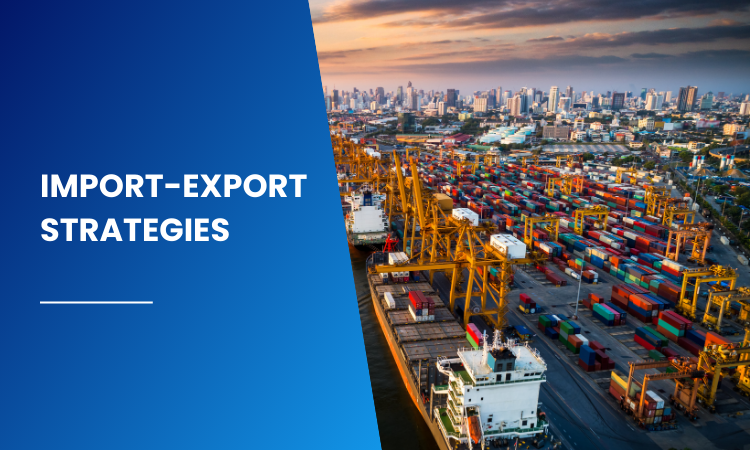
1. Navigating the Global Market: A Guide to Import-Export Strategies for Business Growth:
The world market is very big and full of opportunities for companies of all sizes. Using (strategies for import and export) can help you reach new customers, give a wider range of products, and grow your business significantly. But it can be hard to figure out how to deal with other countries. This guide will show you the steps you need to take to start importing and exporting with ease.
Step 1: Study the Market and Choose a Product
Researching things carefully is the key to success. Find target markets that really want your products or don’t have many other choices that you can fill. Think about things like import taxes, cultural preferences, and other businesses that are already in the market. When choosing what to import or export, choose items that will make you the most money and make sure they follow the rules in both your home market and the market you want to reach.
Step 2: Learn about the logistics of importing and exporting
The flow of things must be kept up. Learn about the procedures of importing and exporting, including the incoterms (international business terms) that spell out who is responsible for what during transportation. For quick and easy customs clearance, work with reputable freight forwarders and look into your shipping choices, such as air freight or ocean shipping, based on cost, speed, and the type of goods you are sending.
Step 3: Use technology
Technology has changed the way people receive and export goods. Connect with foreign suppliers and distributors through the Internet. Using e-commerce tools like WooCommerce can make it easier to import and export goods, as well as handle product listings, prices, and interactions with customers in different countries.
Step 4: Building Partnerships
It is very helpful to build strong partnerships with local businesses in the area you want to sell to. These partners can help you understand regional differences, get around regulatory problems, and build your brand’s reputation. To make sure your business runs smoothly and legally, you might want to work with distributors, customs brokers, and lawyers.
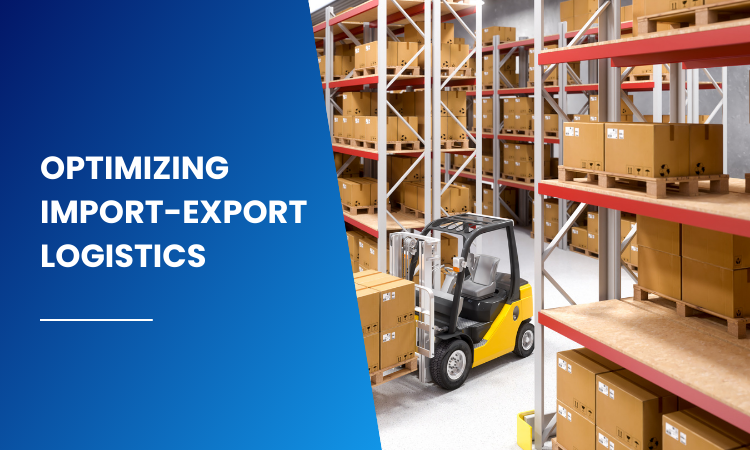
2. Optimizing Your Import and Export Logistics for Increased Profitability:
When it comes to importing and exporting, even the best-made goods can fail to compete if the logistics aren’t working well. Streamlining your import and export processes not only makes sure that goods happen on time, but it also has a direct effect on your bottom line. Here’s how to improve your operations so you can make more money:
Don’t accept the first freight price you get. Talk to freight forwarders and carriers about rates based on volume, regularity of shipments, and incoterms. You might want to combine smaller shipments to take advantage of economies of scale and lower the cost of shipping each item.
(Logistics management software) lets you keep an eye on packages in real-time, spot possible delays, and find the best routes. Warehouse management tools can help make it easier to keep track of inventory and pick items, which can cut down on mistakes and speed up delivery times.
Think about carefully putting warehouses closer to the people you want to sell to. This cuts down on the cost of the last mile of shipping and speeds up the time it takes to fill customer orders. Also, look into duty drawback programs. These let you get some of your import duties back when you sell the things again.
Effectively packaging your goods will help keep them safe and make the best use of the room in containers. Look into packing materials that are both light and safe to lower the overall weight of your shipment and maybe even the cost of freight.
Work with a reputable customs broker to make sure your things are properly documented and put into the right category. This lowers the chance of delays and possible fines at customs, so your packages stay on schedule.
3. Exploring Trading Import-Export Dynamics in a Rapidly Evolving Economy:
Global economic conditions are always changing because of new technologies, changing customer tastes, and shifts in world politics. The worlds of import and export are affected by these changes in a big way, giving companies both problems and chances.
Online marketplaces have changed the way people trade by removing borders so that companies can sell straight to customers all over the world. This leads to more competition, but it also creates new markets that weren’t possible before.
Costs of importing and exporting can be affected by trade deals and government rules in a big way. Businesses need to know about how trade policies change and about possible trade wars that could mess up supply lines.
More and more, customers want eco-friendly goods and ethical ways to get them. To reduce the damage to the environment and ensure responsible buying all along the supply chain, import-export logistics need to be looked at again.
Automation and AI are making the process of importing and exporting more efficient. Businesses can use technology to become more productive, cut costs, and see global market trends in real-time.
The goal of regional trade deals like the European Union and the North American Free Trade Agreement (NAFTA) is to lower barriers to trade within certain areas. Businesses in these blocs may find this to be a good thing, but it’s important to think carefully about how to deal with the different agreements.
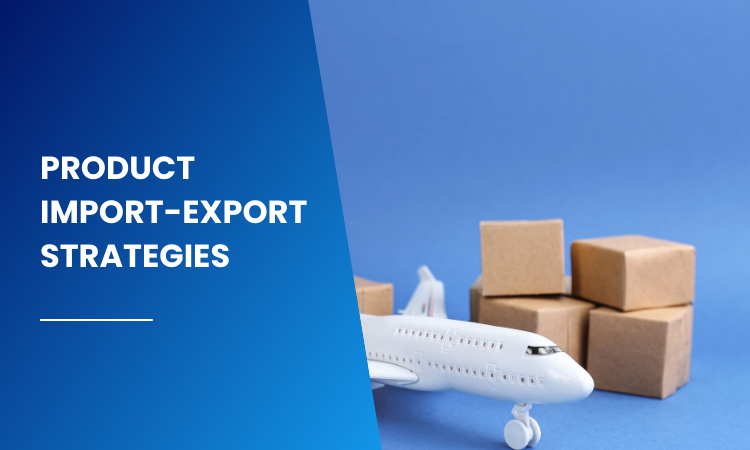
4. Product Import-Export Strategies: Enhancing Your Reach in the Global Marketplace:
Because there are so many possible customers in the global marketplace, it takes a strategic approach to choosing products and putting them in the market to do well in it. Consider these important strategies:
First and foremost, you must do a thorough market study. There are a lot of goods that people want in your target markets but not many that are available locally. Assess the possibility for profit by looking at import taxes, cultural preferences, and current competition.
After getting rid of the costs of shipping, imports, and possible tariffs, choose items with a good profit margin. Thoughtfully consider the product’s lifespan and its ability to remain in high demand for a long time.
The success of a product can be greatly affected by cultural differences. Think about the packaging, labeling, and any changes that need to be made to reflect local laws and customer tastes.
Establishing trusting relationships with foreign suppliers is very important. Prioritize suppliers who have a history of quality, on-time service, and low prices.
Make your import and export processes easier by using e-commerce systems like WooCommerce. The global audience you can reach is increased by these platforms’ tools for handling product listings, prices, and interactions with customers across borders.
Profitability depends on having good import-export operations. It is recommended to negotiate reasonable shipping costs, look into options for combining smaller packages, and use technology to track shipments in real-time and find the best routes.
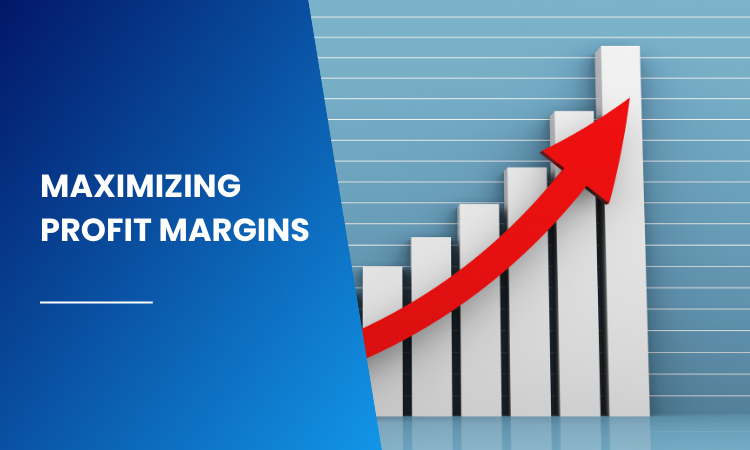
5. Maximizing Profit Margins with Efficient Import-Export Operations:
Finding the best way to make the most money is important for long-term success in the competitive world of import and export. Inefficiencies can quickly hurt your bottom line, but global trade can open up a lot of great possibilities. To make your import and export business run more smoothly and make a lot of money, follow these steps:
Techniques for Cutting Costs:
Don’t feel shy to talk to providers and freight forwarders about prices. Make the most of your expected volume and payment terms to get the best deals on shipping and buying products.
Ship smaller items together with bigger ones to save money on shipping costs per unit and take advantage of economies of scale. Forecasting and planning ahead can help you avoid needing fast shipping choices as much as possible, which will save you even more money.
To keep track of packages, spot possible delays, and find the best delivery routes, you should buy logistics management software. Therefore, processes are streamlined, and wasteful costs are kept to a minimum.
How to Make Your Supply Chain Work Better:
Avoid being too dependent on a few suppliers by getting them from a variety of places. Therefore, prices are more likely to be competitive, and the risks of problems with any one provider are lower.
To keep storage costs low and avoid stock-outs that could cost you sales, make sure you always have the right amount of goods on hand. In order to improve the picking process and make sure that orders are filled quickly, use warehouse management tools.
Check with your government to see what duty drawback schemes they have. When you re-export things, these programs give you some of the import duties back, which could help you make more money.
Creating value for the long term:
High-quality products and great customer service should be your top priorities. Because of this, customers will be more loyal to the company and buy from you again, which could lead to higher lifetime customer value and higher prices.
As a way to set yourself apart from rivals and maybe even charge more, think about adding value-added services like product customization or installation.
6. The Role of Import-Export in Boosting the Global Economy:
Importing and exporting are very important to a global economy because of how linked the world is now. Several important ways that import and export help growth and prosperity are by making it easier for people to trade things and services across borders:
Countries can specialize in making things they are better at by importing and exporting them. As a result, resources are distributed more efficiently around the world, and consumers can choose from a bigger range of higher-quality goods at competitive prices.
When export businesses do well, domestic production goes up, which creates jobs in (logistics), manufacturing, and other related fields. Imports also open up new business possibilities for both wholesale and retail companies, which helps the economy grow by creating more jobs.
Foreign markets give American businesses a reason to come up with new ideas and make their products better and more efficient. This constant push for progress speeds up technological progress in all fields, which is good for both countries that sell and countries that import.
Countries become more dependent on each other when they import and sell goods. This not only makes economic ties stronger, but it also motivates people to work together on things like intellectual property rights and trade rules. This makes the global economy more stable and predictable.
Importing and exporting are very important for emerging countries to be able to join the world economy. Developing countries can make money to invest in infrastructure, education, and health care by exporting raw materials and finished goods. This will help their economies grow in the long run.
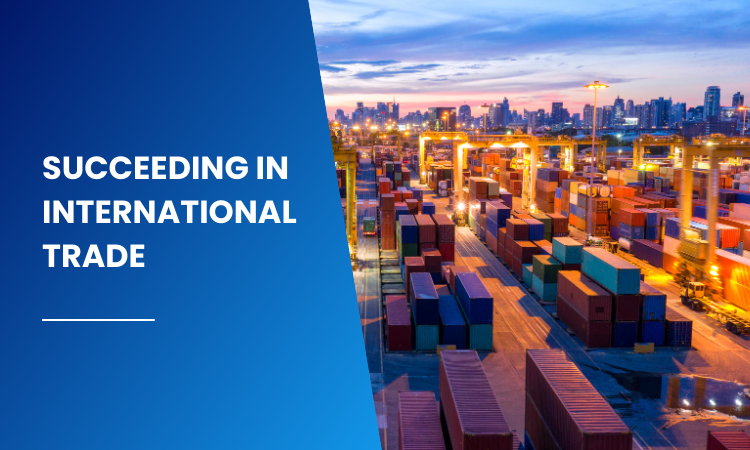
7. Succeeding in International Trade: Key Tips for Import-Export Success:
Importing and exporting opens up a lot of doors for businesses of all kinds. Getting around the complicated rules of foreign trade, on the other hand, can seem impossible. Some important tips to help you import and export successfully:
Proceed with Caution. Find out what your target market wants so you can see if your goods are in demand and see what your competitors are doing. The information you get from this study will help you choose products, set prices, and market your business.
It is very important to know and follow the rules for importing and exporting. Learn about the customs procedures, tariffs, and any (licenses or permits) that are needed in both your home market and the places you want to sell to. If you want to make sure that customs clearance goes smoothly, work with a customs broker.
Building strong relationships is key to being successful in foreign trade. Form relationships with dependable freight forwarders, suppliers, and possible distributors in the market you want to reach. These partnerships help with logistics, give you valuable local knowledge, and can lead to new possibilities.
Technology is your friend. Use the Internet to get in touch with wholesalers and distributors in other countries. Look into e-commerce options like WooCommerce to make it easier to import and export goods and handle contacts with customers in different countries.
The world market changes all the time. Prepare to change your plans if you need to. Keep up with changes in trade policies, customer tastes, and technology to stay ahead of the competition.
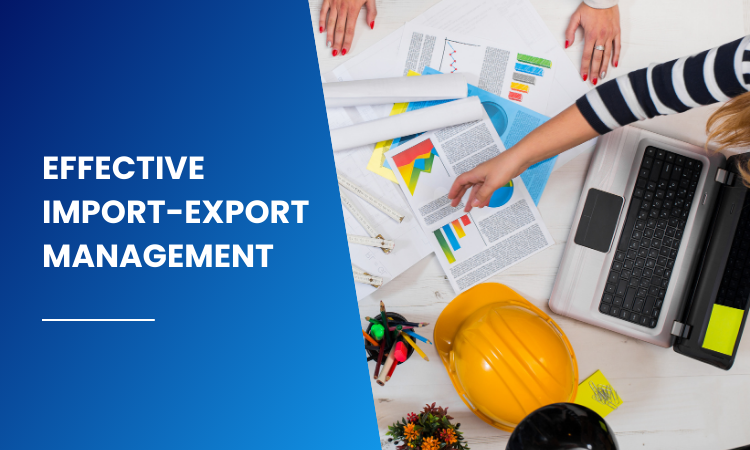
8. Unlocking Opportunities: Strategies for Effective Import-Export Management:
Trading goods between countries is full of opportunities. It can help you meet more people and grow your business to new heights. But getting around the complicated rules of foreign trade needs a well-thought-out plan. To take advantage of the huge possibilities that import and export bring, here are some good management tips:
Putting Down a Strong Base:
Do a thorough market study to find opportunities that will make you money. Think about things like import taxes, cultural preferences, and other businesses in your target market to choose goods that are in high demand there.
Find out what the rules are for importing and exporting in both your home country and the country you want to sell to. For easy customs clearance and to avoid delays that cost a lot of money, work with a customs broker.
Improve Your Operations:
Import and export transportation should be your top priority when you’re trying to improve your business. Deal with (shipping companies) that offer cheap rates, look into options for combining smaller shipments, and use technology to track shipments in real time and find the best routes.
To keep storage costs low and avoid running out of stock, keep your inventory at the right amount. In order to improve the picking process and make sure that orders are filled quickly, use warehouse management tools.
Adopting Technology and Partnerships:
Use technology to make your business run more smoothly. Look into logistics management software and e-commerce platforms like WooCommerce to keep track of customer contacts, product listings, and prices across borders.
Build strong ties with dependable freight forwarders, suppliers, and possible sellers in the market you want to reach. These partnerships give us valuable information about the area, make sure that logistics run smoothly, and open up new possibilities.
Always Getting Better:
Keeping up with changes in trade laws, consumer trends, and technology in the import-export world is an important part of continuous improvement. In a world market that is always changing, this ability to adapt will help you stay competitive.
Learn how well your imports and exports are doing by using data analytics. To make the most money, you should find places to improve, make the most of your pricing strategies, and make smart choices.
9. From Local to Global: How Import-Export Can Transform Your Business:
Want to grow your business beyond the area you’re in? One strong way to do that is through the world of imports and exports. You can open up a lot of doors for your business to grow from a local player to a global competitor by using import and export tactics.
Import and export open doors to entirely new customer segments. You can sell your goods in foreign markets where they are in high demand or where there aren’t many other options in the area. This means you can make more sales and have a wider range of customers, which makes you less dependent on a single market.
When you import, you can give your local customers a bigger range of goods. You can find one-of-a-kind things that aren’t sold in your own country, which lets you cater to niche markets or take advantage of seasonal trends. By having a wider range of products, you may be able to attract new types of customers and make more money.
You can use economies of scale when you import and sell. By buying more from foreign suppliers or selling your goods to a wider audience, you might be able to get better deals on prices and make more money.
When you deal with other countries, you get to know new ideas and the best ways to do things. If you want to stay ahead in a tough local market, you can learn from businesses that are doing well in other countries and use their new ways of making things.
Your brand’s picture will improve if you can successfully navigate the import-export landscape. Becoming a global player shows that you are ambitious, knowledgeable, and able to serve areas around the world. This better recognition of the company also builds trust and loyalty among customers in the area.
10. Elevating Your Business Through Strategic Product Import-Export for WooCommerce:
E-commerce has changed a lot because of (WooCommerce). Now, businesses of all kinds can sell online. However, what if you could use WooCommerce to make the most of the huge potential of the world market? Smart strategies for importing and exporting products can turn your WooCommerce store from a local haven to a global shop, which has many benefits, such as:
Reaching people in other countries is easier with WooCommerce. You can offer your local customers a wider range of goods if you choose which products to import with care. In this way, you can target specific groups, take advantage of yearly trends, and keep your products new and interesting.
If you import, you might be able to get goods from foreign suppliers at prices that are competitive. This can help you make more money, especially since WooCommerce makes it so easy to run your online store.
Importing and exporting products is easier with WooCommerce. Without the hassles of standard foreign sales channels, you can easily manage product listings, prices, and interactions with customers across borders.
There are a lot of trendy items on the global market. You can take advantage of foreign demand and possibly reach whole new groups of customers through your WooCommerce store by carefully choosing which products to export.
Using WooCommerce to sell your products all over the world improves the picture of your brand. It shows that you are ambitious, know a lot about foreign trade, and can work with a wide range of people. This better knowledge of the brand builds trust and loyalty among customers in and outside of the country.
How to Begin Importing and Exporting with WooCommerce:
There are many plugins and extensions for WooCommerce that are meant to make importing and exporting easier. You can make sure that everything goes smoothly for both you and your customers with these tools. They can help you convert currencies, integrate shipping, and stay in line with foreign tax laws.
Conclusion:
Get the information and tools you need to understand the import-export process. This blog has given you a basic idea of import-export strategies, covering everything from choosing the right products to making sure they are legal. Don’t forget that the global market is waiting for you. Take the first step to meet more people and grow your business.
